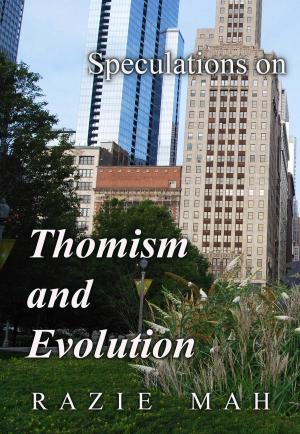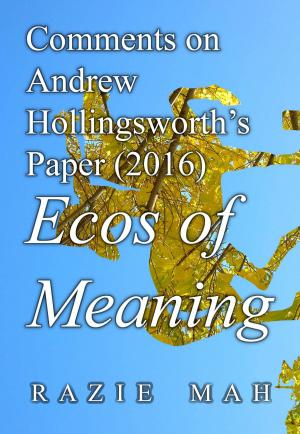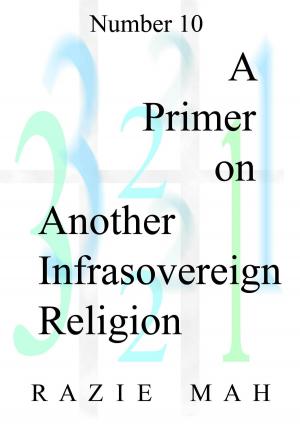Comments on Religious Experience (1985) by Wayne Proudfoot
Nonfiction, Social & Cultural Studies, Social Science, Anthropology, Religion & Spirituality| Author: | Razie Mah | ISBN: | 9781942824077 |
| Publisher: | Razie Mah | Publication: | May 13, 2015 |
| Imprint: | Smashwords Edition | Language: | English |
| Author: | Razie Mah |
| ISBN: | 9781942824077 |
| Publisher: | Razie Mah |
| Publication: | May 13, 2015 |
| Imprint: | Smashwords Edition |
| Language: | English |
This work, and other reviews in this series, demonstrate the potential of the category-based nested form for sympathetic (as opposed to critical) analysis. Elements in Proudfoot’s arguments are associated to nested forms. Alternate storylines are proposed.
Friedrich Schleiermacher, in the early 1800s, defined “religion” through the concept of “a religious experience”. The religious experience was not preconditioned by thoughts or concepts. It just happened. It was an emotional reaction to an encounter with a feeling that made no sense at all, such as the feeling of absolute dependence on a source outside of oneself.
Schleiermacher’s lectures were addressed to a Berlin postreligionist (enlightenment) audience. Some accepted his thesis. Some thought that it was bunk. The former prevailed and Schleiermacher’s point of view inspired researchers, such as William James and Rudolph Otto, for the next 200 years.
The Achilles heel of this research program, however, rested on the sophistication of those who accepted Schleiermacher’s thesis. These sophisticates could both admit that they were not religious (postreligionist) yet sense that there was something irreducible and central to religion. That ‘something’ was the religious experience. The less cultured critics demanded consistency: If a thinker was “not religious”, why on earth would ‘he’ entertain the preposterous claim that “the religious experience could not be reduced to cause and effect”.
This was Proudfoot’s position through his book. Proudfoot proposed that the religious experience could be reduced to contingent and ascriptive causality. His work was given a ribbon by the Academy.
Proudfoot was modern to the core. So, his work offers the opportunity to demonstrate a way of thinking more postmodern than postmodernism. The category-based nested form shows that Proudfoot was correct. Schleiermacher’s thesis evoked a religious experience. Yet, the thesis and the religious experience are irreducible. Proudfoot’s contingent and ascriptive causalities play within a working model composed of nested forms. “The ideas that the religious experience was supposed to reduce to” are simply selected elements of the working model
This work, and other reviews in this series, demonstrate the potential of the category-based nested form for sympathetic (as opposed to critical) analysis. Elements in Proudfoot’s arguments are associated to nested forms. Alternate storylines are proposed.
Friedrich Schleiermacher, in the early 1800s, defined “religion” through the concept of “a religious experience”. The religious experience was not preconditioned by thoughts or concepts. It just happened. It was an emotional reaction to an encounter with a feeling that made no sense at all, such as the feeling of absolute dependence on a source outside of oneself.
Schleiermacher’s lectures were addressed to a Berlin postreligionist (enlightenment) audience. Some accepted his thesis. Some thought that it was bunk. The former prevailed and Schleiermacher’s point of view inspired researchers, such as William James and Rudolph Otto, for the next 200 years.
The Achilles heel of this research program, however, rested on the sophistication of those who accepted Schleiermacher’s thesis. These sophisticates could both admit that they were not religious (postreligionist) yet sense that there was something irreducible and central to religion. That ‘something’ was the religious experience. The less cultured critics demanded consistency: If a thinker was “not religious”, why on earth would ‘he’ entertain the preposterous claim that “the religious experience could not be reduced to cause and effect”.
This was Proudfoot’s position through his book. Proudfoot proposed that the religious experience could be reduced to contingent and ascriptive causality. His work was given a ribbon by the Academy.
Proudfoot was modern to the core. So, his work offers the opportunity to demonstrate a way of thinking more postmodern than postmodernism. The category-based nested form shows that Proudfoot was correct. Schleiermacher’s thesis evoked a religious experience. Yet, the thesis and the religious experience are irreducible. Proudfoot’s contingent and ascriptive causalities play within a working model composed of nested forms. “The ideas that the religious experience was supposed to reduce to” are simply selected elements of the working model















